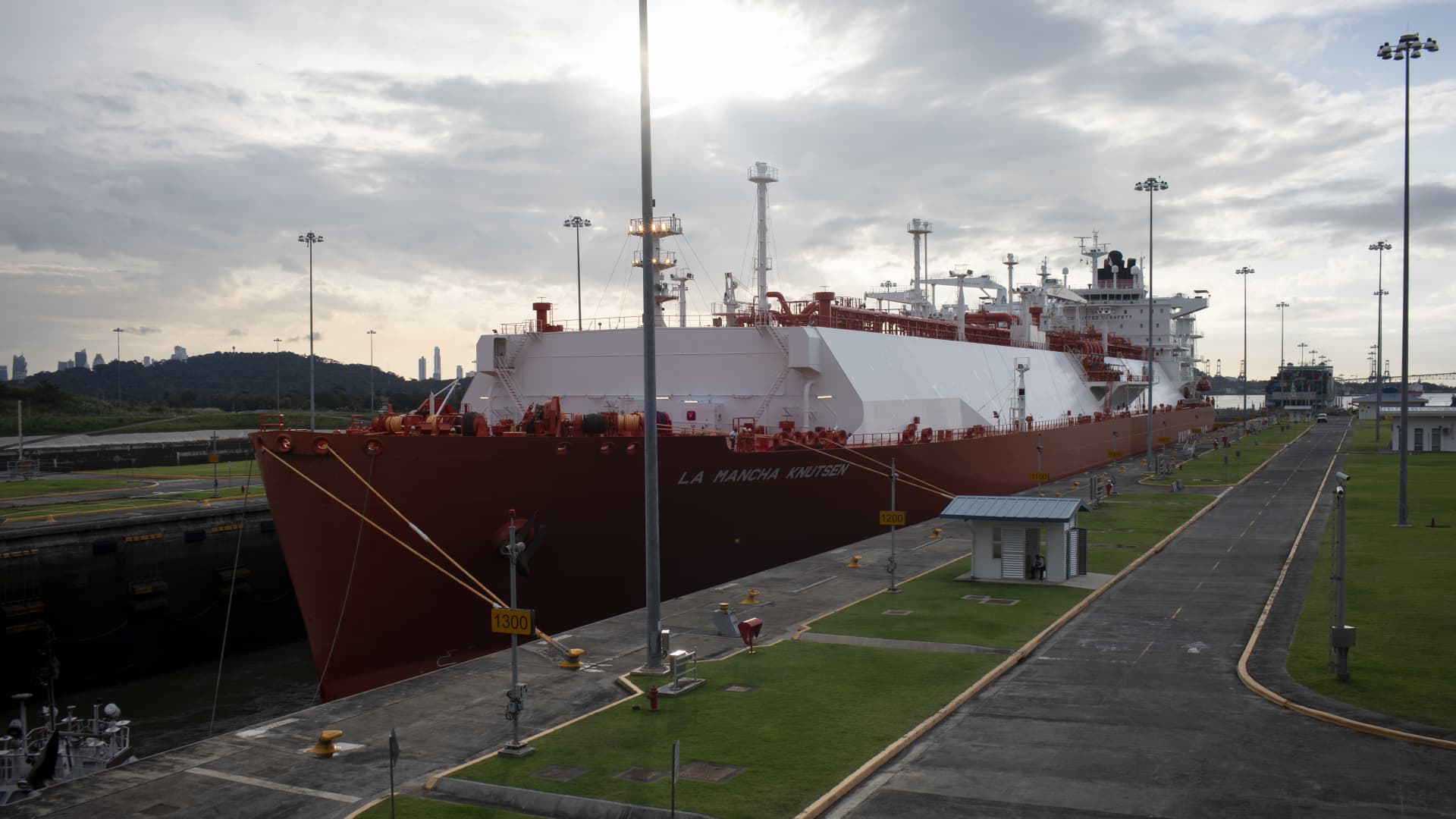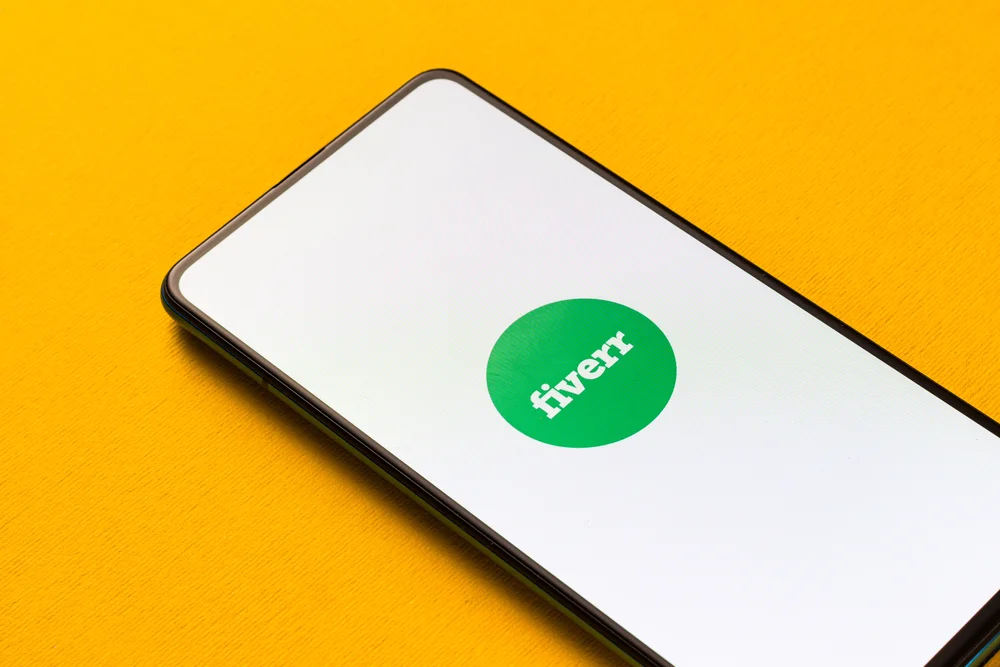
The Panama Canal Authority is aiming to lure back lost energy trade with changes to its booking system for LNG canal transits, and with a new LNG pipeline project offering energy and tanker companies an alternative to move the commodity across the critical global shipping gateway.
Ricaurte Vásquez, administrator of the Panama Canal Authority, tells CNBC that the canal is moving closer to reinstating a preferred booking slot system for LNG carriers as a way to bring back more of the business. LNG prebooking was removed during drought years and has not returned to date.
“We most likely will reinstate that window of reservations for LNG vessels effective next year,” Vásquez tells CNBC. The Panama Canal has moved to a long-term slot allocation approach, a booking system that allowed for a full year of reservations, but he conceded it “was used very little by LNG this year.”
“We have revamped the product after conversations with customers,” he said, and he added that the Panama Canal Authority plans to announce additional packages for LNG transits that would provide flexibility in changing the tanker type and transit dates.
“I think it’s going to be helpful for them to schedule transits to the Panama Canal,” Vásquez said. “We have some packages that will be very specific, and we have seen shipping companies that go for very specific transits. … We are fine-tuning some of the elements after conversations with the industry, and I think that is going to help,” he added.
Years of severe drought cost the Panama Canal a significant amount of its liquified natural gas trade. Restrictions on vessel weights due to low water levels sent LNG tankers on other shipping routes, and led to a decline in LNG transits through the canal that reached as high as 73%. Even as conditions have improved, LNG shipments have not returned to previous levels, with carriers continuing to choose the longer route around Africa’s Cape of Good Hope.
To free up additional vessel slots for LNG, the canal is also in the process of an ambitious pipeline project, creating what is being called the Interoceanic Energy Corridor. Instead of tankers carrying natural gas liquids, including ethane, butane and propane, through the canal, the NGLs would travel through a 76-kilometer pipeline connecting the Atlantic and Pacific ports. Two maritime terminals would be built to accommodate the tankers. Approximately 2.5 million barrels of energy products per day could be moved through the pipeline.
On Thursday, canal officials met with approximately 30 corporations from Asia, the U.S., and South America interested in the natural gas terminals and pipelines, including Exxon Mobil , Phillips 66 and Shell .
Vásquez also noted “a very good reaction from the Asian market.” Itochu Corporation, Japan Bank for International Cooperation, Mitsubishi, Movement Industries, Nippon Koei, and Sumitomo were all in attendance. Tokyo is the No. 1 buyer for natural gas liquid shipments that pass through the canal.
The process of choosing a concessionaire for the pipeline and energy corridor is underway, with a tender projected for the second quarter of 2026.
Freight volume is declining, China politics coming into play
The canal is critical to the U.S. economy and trade. The U.S. is the largest user of the Panama Canal, with total U.S. commodity export and import containers representing about 73% of Panama Canal traffic, and 40% of all U.S. container traffic traveling through the Panama Canal every year. In all, roughly $270 billion in cargo is handled annually.
The plans to increase the energy shipments come after record-breaking container traffic in early 2025 due to trade war frontloading has given way to a forecast for decrease in transits over the remainder of the year and into 2026.
“We will not have the volumes that are usually at this time of the year, and container cargo as compared to other years because of the front loading, that’s what we are seeing right now,” Vásquez said.
The Panama Canal generates its revenues from fees associated with vessel transits, as well as the volume of containers carried on each vessel.
The maritime industry has been navigating a sea of uncertainty with tariffs, as well as looming Chinese shipbuilding fees being imposed by the U.S. government, which have altered the flow of trade.
Starting on October 14, United States Trade Representative-mandated fees associated with the new regulations on Chinese-built vessels calling on U.S. ports go into effect. Chinese carriers, such as COSCO and OOCL, will pay additional fees for entering the U.S. ports regardless of where they are built. Exceptions will be made for voyages shorter than 2,000 nautical miles and vessels with a smaller than 4,000 twenty-foot equivalent units (TEU) carrying capacity.
Data and analysis from Sea-Intelligence show early signs of a reduction in the deployment of Chinese-built vessels on the Asia-North America West Coast route.
“The share of Chinese-built vessels has trended downwards from a level of 25-30% in the first half of 2025 to a range of 20-25% in recent weeks,” said Alan Murphy, CEO, Sea-Intelligence. “A similar, though less pronounced, trend is visible on the Asia-North America East Coast trade,” he added.
The Panama Canal Authority has an advanced booking system that ocean carriers can opt to use to slot future transits. Based on the data from that system, Vasquez tells CNBC it has not seen any changes in bookings involving Chinese-built vessels.
“What we see right now is that essentially, of all vessels that transit in the Panama Canal, which are around 12,000 to 13,000… 1,000 probably will be built in China. So we don’t have that pressure on the market, because there are alternatives for non-Chinese-built vessels to come through the Panama Canal. So the fleets have a lot of flexibility to do that,” Vásquez said. “On the particulars of COSCO or OOCL, we have not seen any reduction in bookings and reservations moving forward,” he added.
At the same time, a pre-feasibility study for the Corozal Port is advancing into the contracting phase, with results expected in the first quarter of 2026. The Corozal Port, located on the Pacific Ocean side of the country, would be integrated into a land-based logistics platform connected by road and rail. Maersk recently acquired the concession from CPKC and Lanco Group/Mi-Jack to operate the rail.
That port is part of a broader effort by the canal to allay concerns about Chinese involvement in ports critical to the canal operations.
The winning bidders will build the port facilities and get to run them for 20 years.
While there has been speculation about Chinese-owned companies being barred from the bidding process, Vazquez tells CNBC, “We have made no decision whatsoever, and probably we cannot comment, because it’s something that has to be considered, studied, and seen, because it’s very difficult to single out anyone at this moment, and we want to have the most open and competitive tender that we can have.”
Carl Bentzel, president of the National Association of Waterfront Employers, which includes port and terminal operating companies, including MSC, CMA, Maersk, and SSA, told CNBC it is bound by confidentiality agreements and cannot disclose names of companies entering the bidding process. “But what we can tell you there is a lot of interest in participating in the expansion of the canal zone,” said Bentzel. “Operational flexibility and serving multiple trade lanes in Panama is attractive, and with competition to be open, there is a lot of interest,” he said.
Hutchison Ports, a unit of Hong Kong-based CK Hutchison, agreed to sell its concession deals in two ports flanking either side of the canal to a consortium led by U.S. asset manager BlackRock and MSC after President Trump accused the ports of being controlled by China, but China has strongly criticized the deal and it remains a fluid situation.
In a recent CK Hutchisson stock exchange filing, the company wrote that “the Group remains in discussions with members of the consortium with a view to inviting major strategic investor from the PRC to join as a significant member of the consortium.”
The terminals of the Port of Balboa (Pacific Coast) and Port of Colon (Atlantic Coast) have been managed via concession by Hutchison Ports since the 1990s, but earlier this year, Panama’s Comptroller General, Anel Flores, filed lawsuits with the Supreme Court to nullify the concession, which was renewed for 25 years in 2021. Flores cited alleged irregularities in the contracts and claimed the renewal was unconstitutional and detrimental to Panama’s interests.
No decision from Panama’s Supreme Court has been issued.



